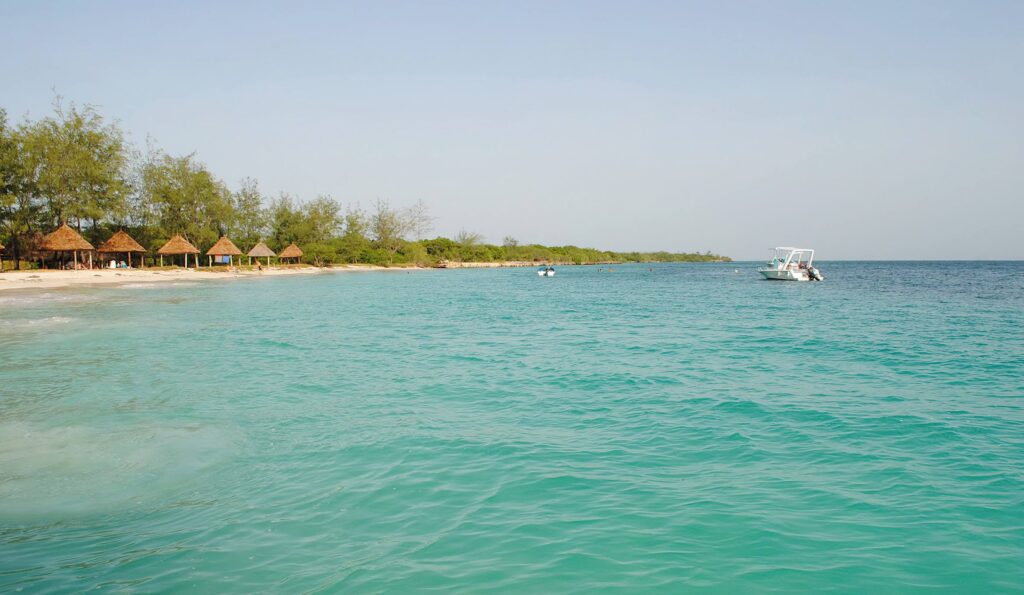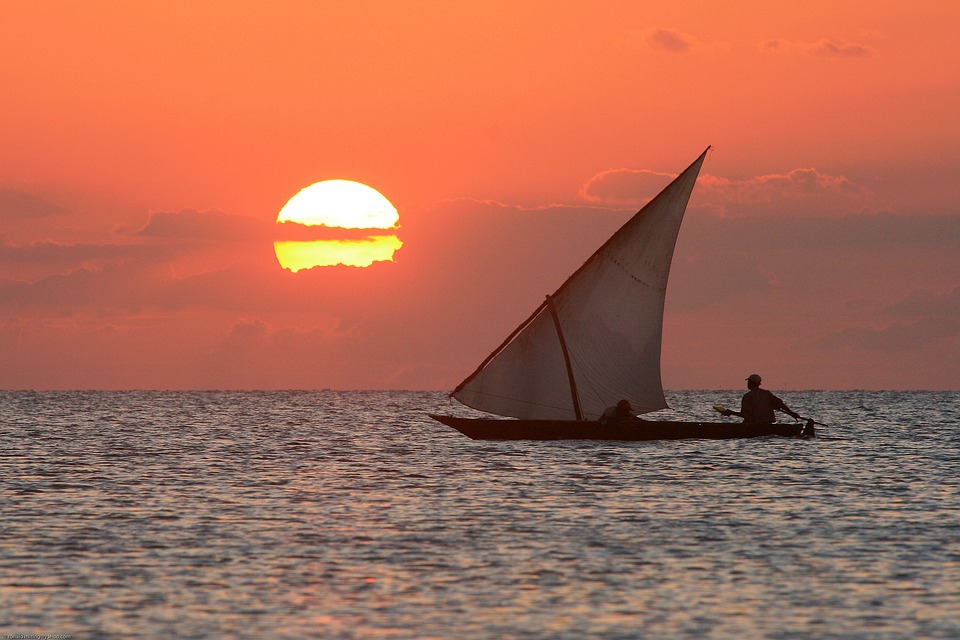Mafia Island
Experience the ultimate relaxation and adventure on Mafia Island, known for its stunning beaches, clear waters, and tranquil atmosphere. Discover top activities and tips for a rejuvenating getaway in this hidden gem of Lindi.
Welcome to Mafia Island
Mafia Island, Tanzania is an island paradise offering superb diving and ocean experiences. Travelers looking to get away from crowded tourist hubs and overdone resort accommodations can saturate themselves in Mafia’s pristine waters, white sand beaches and coral reefs. Mafia, Tanzania has no connection at all with the Italian gangsters and you certainly will not find any mob bosses among the sea turtle nesting sites or schools of tropical fish that abound on the island. The name “Mafia” comes from the Swahili phrase Mahali pa Afya, which means ‘the place of good health’. And, we certainly think spending time on this serene island can only improve one’s health.
The appeal of Mafia is its marine life; from sea turtles or coral reefs, to gentle, but gigantic whale sharks. Mafia Island Marine Park is the first site to be designated a marine park in all of Tanzania, and is dedicated to the conservation and preservation of this incredible marine area. Along with Mafia, there are three other, small islands that comprise the Mafia Archipelago: Jibondo, Juani and Chole. While they are smaller, each of these beautiful islands offers something unique and are worth visiting.
While Zanzibar is a more well-known destination for tourists in Tanzania, Mafia remains a nearly untouched paradise. It’s not on the radar of many travel agents, meaning that Mafia’s beaches are secluded and wildlife and marine life is abundant. Because of this exclusive status, visiting Mafia is more expensive than Zanzibar. However, the trade-off is feeling that you have the entire island to yourself. Water adventures such as snorkeling and diving expeditions might very well be only you and your travel partner exploring a coral reef or diving with whale sharks.In some ways, Mafia has remained a very local island in the Indian Ocean. The local residents of Mafia Island are mostly fishermen and farmers. Farmers generally grow tropical fruits and rice, while some may cultivate trees for cashews or coconuts. Visitors to the island are certain to enjoy tropical treats grown right there, on the island.
Things to do on Mafia Island
Mafia has plenty of marine and beach activities to keep travelers active and engaged:
- Deep-sea fishing
Deep-sea fishing is especially popular in the area, offering guests the chance to catch great barracudas, kingfish, enormous tuna (both yellow fin and dogtooth tuna varieties), giant trevally (which can be up to 50 kgs in weight!) and Dorado.The largest-recorded fish caught in the Mafia area weighed a whopping 57 kg (125 lbs)! The famous Sir Arthur Conan Doyle (author of Sherlock Holmes’ stories) visited in 1950 and caught a massive, 34 kg (75 lbs) dorado that broke African-wide records for this type of fish. As far as we know, this record still stands.If you’re interested in deep-sea fishing on Mafia, be encouraged that the fishing season is over 8 months long, compromising the majority of the year (August through March). Also, consider coming for the Mafia Channel Tournament, hosted by Kinasi Lodge (a member of the Game Fishing Association), held here on Mafia Island annually.
- Wildlife spotting
Mafia Island is a part of incredible Tanzania, which means that there is plenty of unique African wildlife to view while on the island. Visitors can see wild hippos, who enjoy the marsh at the center of the island and other animals, like adorable vervet monkeys and genet cats that roam freely on the island.Mafia’s Chole Island is famous for their giant fruit bats – harmless, tropical bats that eat only fruit.
- Bird-watching
Across the Mafia area, bird lovers have the opportunity to spy over 120 species of unique tropical birds. The forests in the northern area of Mafia offer the best chances to see birdlife, but, because everything is ‘extra’ in Tanzania and it’s islands – Mafia Island is one of the few places you can have an excellent bird-watching tour, from the waters of the Indian Ocean, seated in a traditional Tanzania dhow.How’s that for a spectacular way to experience nature?
- Diving
Mafia Island and the surrounding smaller islands offer incredible diving experiences. In fact, Mafia Island is renowned in East Africa for its natural, vibrant reefs and amazing variety of tropical fish. This area has been documented and given special protection by major international bodies, including the World Wildlife Fund (WWF). Because of its important reefs and marine life, and the efforts of international organizations for wildlife conservation, the Mafia Island Marine Park was founded in 1995. This is the first of Tanzania’s Marine parks and an important approach to protecting and conserving the marine areas of the Indian Ocean along Tanzania’s coasts.
Diving around Mafia Island means the chance of sighting over 50 types of unique coral and nearly 500 species of fish. In the clear, warm waters divers will see schools of vibrant orange and neon-yellow fish, glimpse seahorses and natural coral in shapes and sizes that look like sculptures or art submerged within the water. The coral reefs around Mafia offer divers some of the most biodiverse marine life on the East African coast. Further, the marine mammals divers or snorkelers might encounter around Mafia island include Humpback whales, Sperm whales and dolphins.
Near Kinasi Lodge there is a famous diving attraction called “The Pinnacle”, which is a tall, 12-meter (nearly 40 feet) high spire of coral. It’s enormous size attracts fish and active marine life from all over, making this a prime location to see some of the most elusive underwater life. Some guests have even spotted moray eels in this area.
Other popular diving locations in the area include Forbes Bay and Dindini North Wall. Diving enthusiasts should consider visiting Mafia Island in the months of December – March for the best diving experiences, although diving opportunities are available year-round.
- Diving with Sharks
Sharks? Diving with sharks!?! Yes, diving with whale sharks.
While some adventure-seekers may prefer the extreme experience of swimming with Great White Sharks, such as is offered in places like South Africa, swimming with whale sharks is an entirely different sort of experience. Whale sharks are beautiful, shy creatures that pose no harm to humans. As their name implies, they are similar to whales, not only in their massive size, but also diet: whale sharks eat plankton. Diving with whale sharks in the tropical waters of the Indian Ocean is a serene experience, allowing visitors to interact with nature in a profound and safe way. These spotted giants can reach lengths up to 8 meters (over 25 feet) and will leave divers in complete awe. But, divers are encouraged to move slowly and gently in the water, because despite their huge size, whale sharks are easily frightened and might swim away if they feel uncomfortable.
The best time to swim with whale sharks is from October – February. This is because the monsoon winds from the north bring down water from the Rufiji River, which is rich with plankton – the whale sharks preferred food. Whale sharks will come in droves along Mafia Island’s western shores to consume plankton, and divers can have the experience of a lifetime swimming with these giant creatures.
How are swimming tours to whale sharks organized?
Travelers join a tour for visiting whale sharks. Once the boat departs into the waters where whale sharks are known to swim it usually takes a short time (15-20 min) to spot these amazing creatures.Once seen, the boat will pause to allow these shy creatures to get accustomed to the presence of the boat. Then, the divers gently enter the water and swim amongst these giant, but harmless sharks for an awe-inspiring experience with nature.
- Snorkeling
If you’re not a trained diver, there are plenty of fabulous places to snorkel and enjoy Mafia’s vibrant reefs and diverse species of tropical fish. Some of these are in quiet, shallow waters, for visitors who are not strong swimmers.
- Visiting Kilindoni Town
Mafia Island’s Kilindoni Town offers a few amenities, such as a bank and post office. It also hosts a local market, for items such as fresh produce and fish or seafood.
A short 30-min drive from Kilondoni is the area of Kisimani, at the south-western edge of the island. At one time, this was a thriving center with a beautiful palace. However, what now remains are only ruins to attest to the established locale that once stood here; some artifacts found in the area have been dated back to 600 B.C. Legend has it that the ruler cut off the hands of the masons and builders so that no one might ever recreate his palace in another location. His actions may have caused the downfall of Kisimani.


